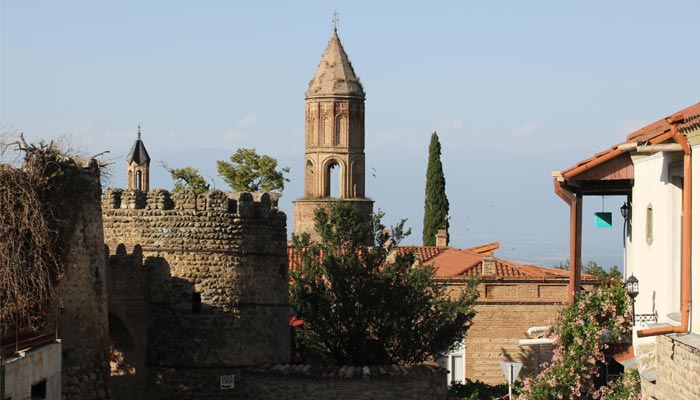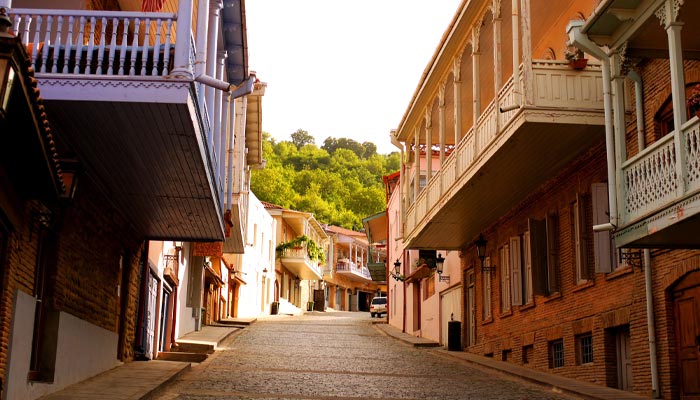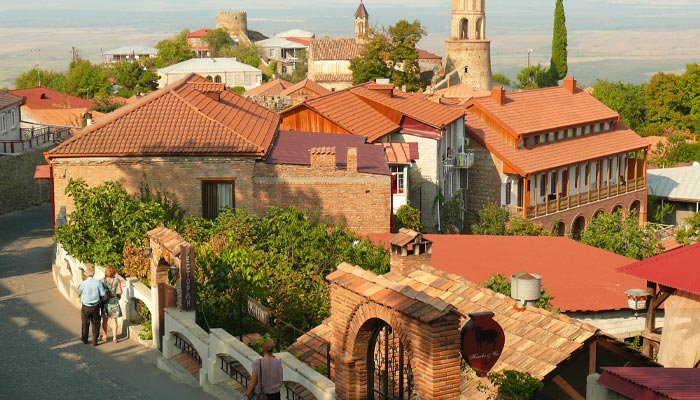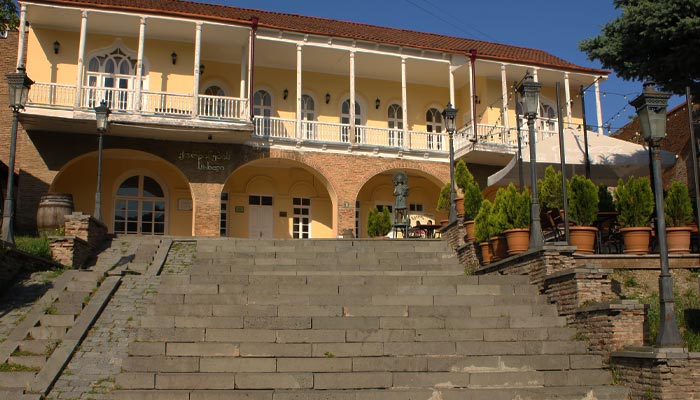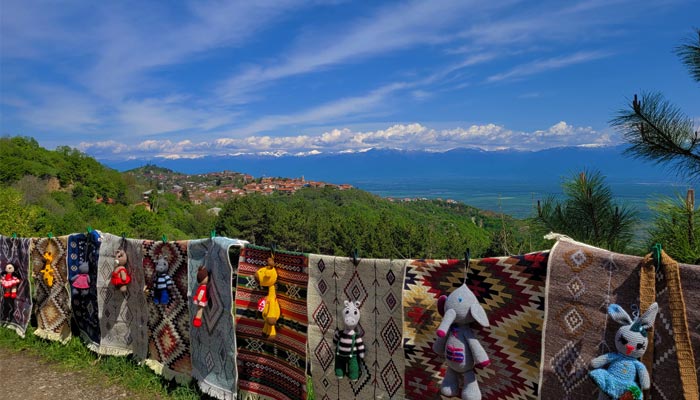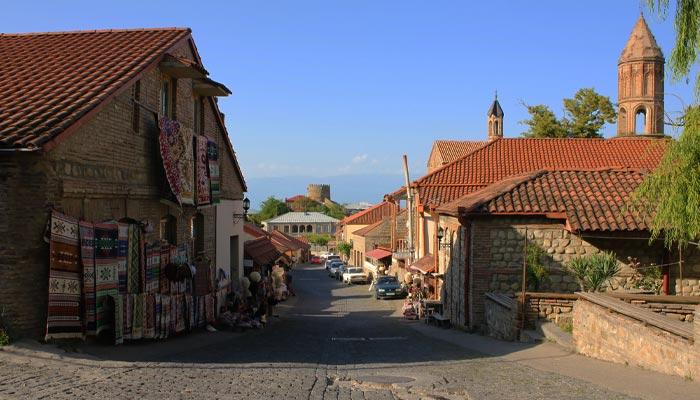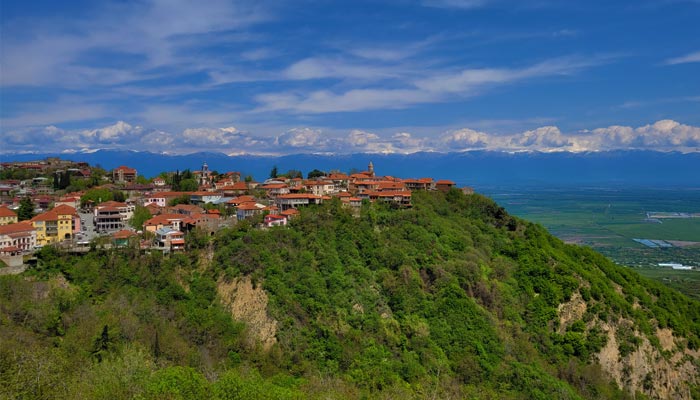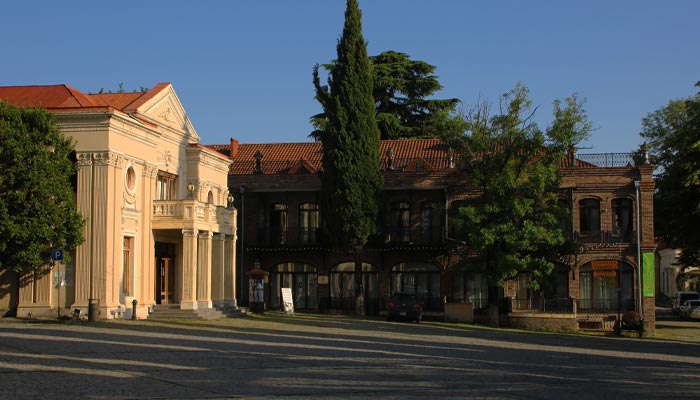|
Signagi Signagi is one of the smallest and most visited towns in Georgia. It is only a two-hour drive from the Georgian capital, Tbilisi, and is an ideal destination for day travellers. Signagi is also one of the few places in Georgia that is popular with both young and old. Region: Kakheti History of Signagi The Signagi region was inhabited in the Bronze Age and was first mentioned in writing in the 2nd century BC by the Greek historian Strabon under the name "Kambisad". In Georgian sources, the area was known as "Kambechovani" and belonged to the East Georgian Kingdom of Iberia. Later the village was given the name "Kizikhi". (Today, Kizikhi is a historical region of Kakheti and includes the territory of two municipalities, Signagi and Dedopliszqaro). After Georgia officially became Christian in the 4th century, the area of today's Signagi became even more important, as Saint Nino, who Christianised the country, is buried in a nunnery nearby. The name "Signagi" first appears in writing in 1770, when King Irakli II decided to build a fortified town to protect against North Caucasian raids from Dagestan. The town had to provide shelter for a large number of people from all over the Kizikhi region and, in the event of a long siege, enable them not only to survive but also to lead a reasonably normal life. King Irakli II chose a plateau on the side of the mountain above the Alazani valley for the city and ordered a defensive wall to be built around the city to ensure good protection. The town was subsequently named Signagi (which translates from Turkish as "place of refuge"). The walls of Signagi The defensive wall is also known as the "Kizikhi Wall" because it stands in the centre of historic Kizikhi and because it was built by the people of Kizikhi. The wall is 4 kilometres long and 10 to 15 metres high. The lower part of the wall is 1.5 metres wide and the upper part is 0.7 to 0.8 metres wide, with a walkway created along the wall because of the difference in width. There are 23 circular defence towers integrated into the wall, which are placed at different distances from each other. The town has 6 arched gates. Interesting to know: 1. At 4 kilometres long, the Signagi wall is the longest in continental Europe. 2. Each tower was given the name of the village whose inhabitants built it. During the defence, the men were also assigned to the respective towers. 3. Inhabitants of the historical region of Kizikhi, where Signagi is located, were not serfs, but were directly subordinated to the Georgian king and were administratively managed by a Mourawi. The mourawi was appointed by the king and had functions similar to those of a governor today. Militarily, the inhabitants were under the Archbishop of Kizikhi. In the event of a military conflict, they were the first unit at the front. About the town In Signagi itself there are few opportunities to grow crops or raise livestock, so Signagi was a trading town with numerous caravanserais and workshops. Its development as a trading town was also aided by the roads that passed through it, such as the road from Tbilisi via Nukriani to the historic Georgian province of Hereti, and from Signagi via Anaga to Telavi. Because the people of Kakheti had farmed and raised livestock for centuries and fought in defensive wars, there were few traders or craftsmen in the region. For this reason, hundreds of families from other parts of Georgia, but mainly from Armenia, settled in Signagi. Soon after its foundation, Signagi had almost 3,000 inhabitants. In 1802, a year after the annexation of Georgia by Tsarist Russia, a Russian dragoon regiment was stationed in Signagi (dragoons were mounted infantry who used their horses for transport but not for fighting). At the beginning of the 19th century there were 9 wine factories in Signagi, as well as brick and leather factories and other workshops. By 1960 the population of Signagi had grown to 9,000 and in 1910 it was just under 17,000. By comparison, there are around 1,500 people living in Signagi today. In 1818 a theological seminary was opened in Signagi, where the Georgian philosopher, teacher and journalist Solomon Dodashvili studied. His monument stands in the centre of Signagi. From the second half of the 20th century, a modern urban life with salons and cafés was established in Signagi due to the influence of Russia and Europe. Signagi became a modern town, catering to the needs of the upper classes of the region. A theatre and several music schools were established in the town and Signagi became the cultural centre of the region. The urban and modern life in Signagi continued throughout the Soviet era and after Georgia's independence in 1991, the town was unofficially declared a city-museum with numerous cafes, restaurants, hotels, wine cellars and museums. Signagi was thoroughly renovated between 2007 and 2010, restoring the town's historic appearance with wood-carved balconies, roof tiles and cobblestones. The name "City of Love Signagi was given the name "City of Love" for several reasons: 1) The town's architecture and location in the mountains give it a romantic, Mediterranean feel. What to do and see in Signagi? 1. Ethnographic-historical museum In Signagi there is an ethnographic-historical museum with well-prepared and labelled archaeological finds and exhibits from the pre-Christian and post-Christian periods. In the museum building, on the second floor, there is a permanent art exhibition of the painter Niko Pirosmani, as well as a large room for travelling exhibitions of various artists from all over the world. 2. The walls of Signagi A visit to Signagi is not complete without a short walk along the walls. The path to the wall is signposted from the town centre, but make sure you walk along the well-secured part with railings. 3. Monastery in Bodbe Whether you are religious or not, the nunnery at Bodbe, just 2 kilometres from Signagi, is a must-see. 4. Regional cuisine There are several small family restaurants in Signagi where you can try various home-made specialities from the region. Some of these restaurants are situated directly on the mountainside and offer fantastic views of the Alazani Valley and the Greater Caucasus. 5. Wine tasting There are several wine cellars in Signagi where you can taste 3 or 4 local wines for the equivalent of 5 euros. If you are not planning to visit other wine regions of Kakheti such as Gurjaani, Telavi, Kvareli etc, then take the opportunity to taste the regional wines in Signagi. On following trip, you will visit Signagi
|

